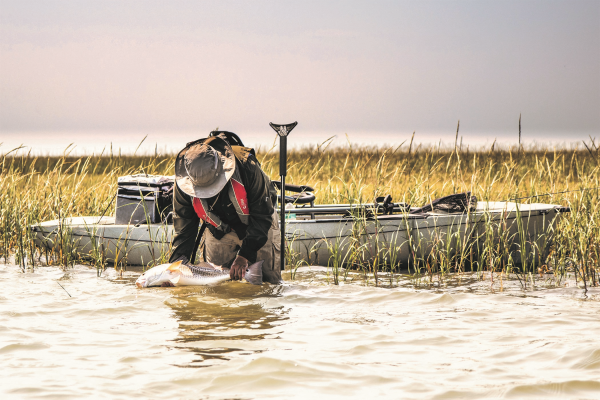The Pros and Cons of Paddling and Pedaling a Kayak
One sure way to get kayakers fired up is to start a healthy conversation about paddling versus pedaling. With advances in kayak propulsion technology, there are increasingly more ways to thrust a kayak through the water than ever before. We take a look at some of the advantages and drawbacks of each method of kayak propulsion.
Paddling
Paddlers harken back to the old-school days where paddling was the only game in town. While options have changed, paddling does provide worthy benefits over pedaling.
The ability to sneak up on spooky fish is probably the most often-cited reason for choosing to paddle over pedaling. Fish don’t like anything out of the ordinary and will vacate the area if they sense something is amiss. Quietly dipping the paddle in the water makes much less commotion then pedal-drive and will allow anglers to slip in on unsuspecting fish. Once in an area, using an ultra-quiet anchor, such as the YakGear YakStick Floating Stake-Out Stick, will secure your boat while fishing out an area.
Fish More Shallow Waters by Paddling
One of the drawbacks of using a pedal drive system is the extra clearance needed under the boat. Some pedaling anglers flutter kick their fins in shallow water, but when fish are in super shallow waters, like redfish busting back in a mudflat, anglers will need to flip up their fins or remove the pedal drive altogether. This will take up much-needed deck space and can become frustrating after numerous switches.
Make Adjustments While Standing with a Paddle
Whether chasing tailing reds or sight-fishing bedded bass, fishing from a standing position can give you an advantage. Standing allows for longer and more accurate casts and provides the ability to pitch and flip baits, too. The paddle plays a critical role in maintaining or adjusting your position to best present the bait to fish. Keeping the paddle close at hand is a must, and the RAILBLAZA QuickGrip Hip Clip is an excellent solution to storing the paddle without unnecessary bending up and down.
Pedaling Gets You Places Fast
Hobie forever changed the landscape of kayak fishing with the introduction of the Mirage Drive in 1997. Since this innovation, many other kayak manufacturers have launched their versions of a pedal drive, and each delivers advantages to paddling.
Whether it’s a rotational pedal with a propeller or push/pull pedals with fins, pedaling provides on-the-water speed and efficiency. Successful tournament anglers are usually the ones who get to their spot first. Anglers who routinely travel large bodies of water will get the most out of their day using a pedal drive to get them where they need to be in a short time.
Pedaling Frees Up Your Hands
The problem with paddling is that it requires both of your hands. Many anglers, in both freshwater and saltwater, actively fish while moving from location to location. Traveling is also an excellent time to tie on different baits and fine-tune fishing electronics. Pedaling while making small adjustments to your keel or skeg is usually enough to keep you on the right track to your destination and your hands-free for other tasks.
Get More Power and Endurance Using Your Legs
Pedaling takes advantage of our strong and powerful leg muscles. Anyone new to kayaking will need to get into paddling shape, but most people will have better built-up endurance in their legs. Even seasoned paddlers can benefit from pedaling when traveling long distances or prolonged periods on the water. Paddling efficiently takes much work to develop the proper technique so that a pedal drive may be the best choice for novice kayakers.
The gap between diehard paddlers and dedicated pedalers is slowly closing as more and more kayakers see the advantages of both methods. As companies continue to produce more efficient ways to propel your kayak, tradition does have its place in kayaking. Whether you choose tradition or innovation, getting on the water as much as possible is the most important goal. To stir up the pot, we could have also thrown in the use of motors, as well. But that is for another day.

